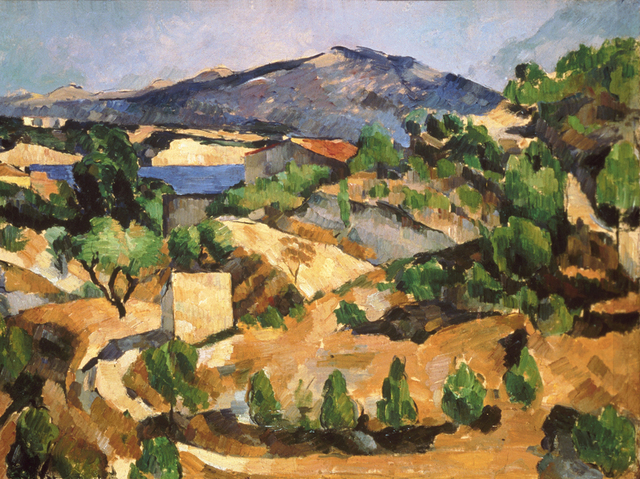Once upon a time, in a museum far, far away, I had my iPod on random. I wandered through galleries listening to Genesis P-Orridge gently sing into my ears until, suddenly, a man spotted a Monet. His excitement was so infectious I followed him over to one of Monet’s “Water Lilies.” Without notice, the track ended, and my world was forever changed. One doesn’t usually expect to associate a great Impressionist painter with Ol’ Dirty Bastard, but I do. “Shimmy Shimmy Ya,” Monet and I will always be part of some off-the-wall ménage à trois.I learned a valuable lesson that April day in Trafalgar Square’s National Gallery: When taking the old MP3 player on an art outing, make a playlist. This note-to-self served me well at the Albuquerque Museum of Art and History’s Turner to Cézanne exhibition. Instead of ODB, I chose a nice soundtrack of M83 as background noise and walked immediately to the Monet I spotted across the enormous gallery. Claude Monet and I re-met, face-to-face, and this time I showed him the respect he deserved.Surprisingly, it was not one of his “Water Lilies” from 1906 that pulled me in. Instead, I found myself mesmerized by “The Charing Cross Bridge.” By using the yellows, greens and oranges so familiar in his nature works, Monet gives London an unnatural haze of color.A similar fog envelops the show’s strongest works, a pair of Symbolist oil on canvases by Eugène Carrière titled “Maternity” and “Maternity (Suffering).” Painted during the same time period, the paintings show two very different sides of motherhood. “Maternity” envelops its subjects in a dream that invites viewers to make out details of the serene images. Conversely, “Maternity (Suffering)” shrouds a different mother and child in nightmare. The colors in both are pale and muted, but “Maternity (Suffering)” brings about the reality of childhood illness through the subtle use of darker shades.Differing perspectives also give the works contrasting emotional qualities. “Maternity” is treated with delicacy, as if Carrière’s paintbrush is an attempt to engage in intimacy. For “Maternity (Suffering),” he views the pair from a distance. The mother desperately grasps the child and the artist stares—almost gawks—at them. He neither understands nor wants to participate in their agony. Collected by sisters Gwendoline and Margaret Davies between 1908 and 1923, shortly after or during the period in which many of the painters worked, the collection returns to its home at National Museum Wales after this, its final stop on a five-city U.S. tour.The collection is exquisite and expertly displayed by The Albuquerque Museum, which should be commended for placing the second series of comparable pieces, Maurice de Vlaminck’s “Village Street” and “The Bridge” and Paul Cézanne’s “The François Zola Dam,” away from one another. The influence of Cézanne on de Vlaminck is obvious. By placing their work apart and simply noting similarities in style on the accompanying placard, curators ask the audience to engage with the art on display rather than simply view it. Turner to Cézanne, which features many landscape scenes, succeeds in nearly all aspects. In fact, its biggest failure is in its marketing. Nearly everyone, myself included, refers to the exhibition as “The Impressionist Exhibit,” despite the inclusion of a large number of Post-Impressionist, Symbolist, Modern and Realist paintings. Impressionism is, perhaps, the best known of the genres, but these works are certainly not the only ones that deserve attention. A three-painting series of academic and salon works stands out among the collection for its realistic detail and strong difference in style from the rest of the work. I only wish the museum had chosen to feature these works more prominently rather than tuck them in a corner. This placement offers the impression they are an afterthought rather than a strong piece of the artistic puzzle.Running through Aug. 8, Turner to Cézanne brings a welcome dose of art history and an excuse to enjoy nature inside, to the hot Albuquerque summer.
Turner To Cézanne: Masterpieces From the Davies Collection, National Museum Wales Runs through August 8The Albuquerque Museum of Art and History2000 Mountain NW$5 plus museum admissioncabq.gov/museum










